Chapter 1: Docker Installation and Operation
1.1 Preparation
- Check the Linux operating system distribution:
cat /etc/os-release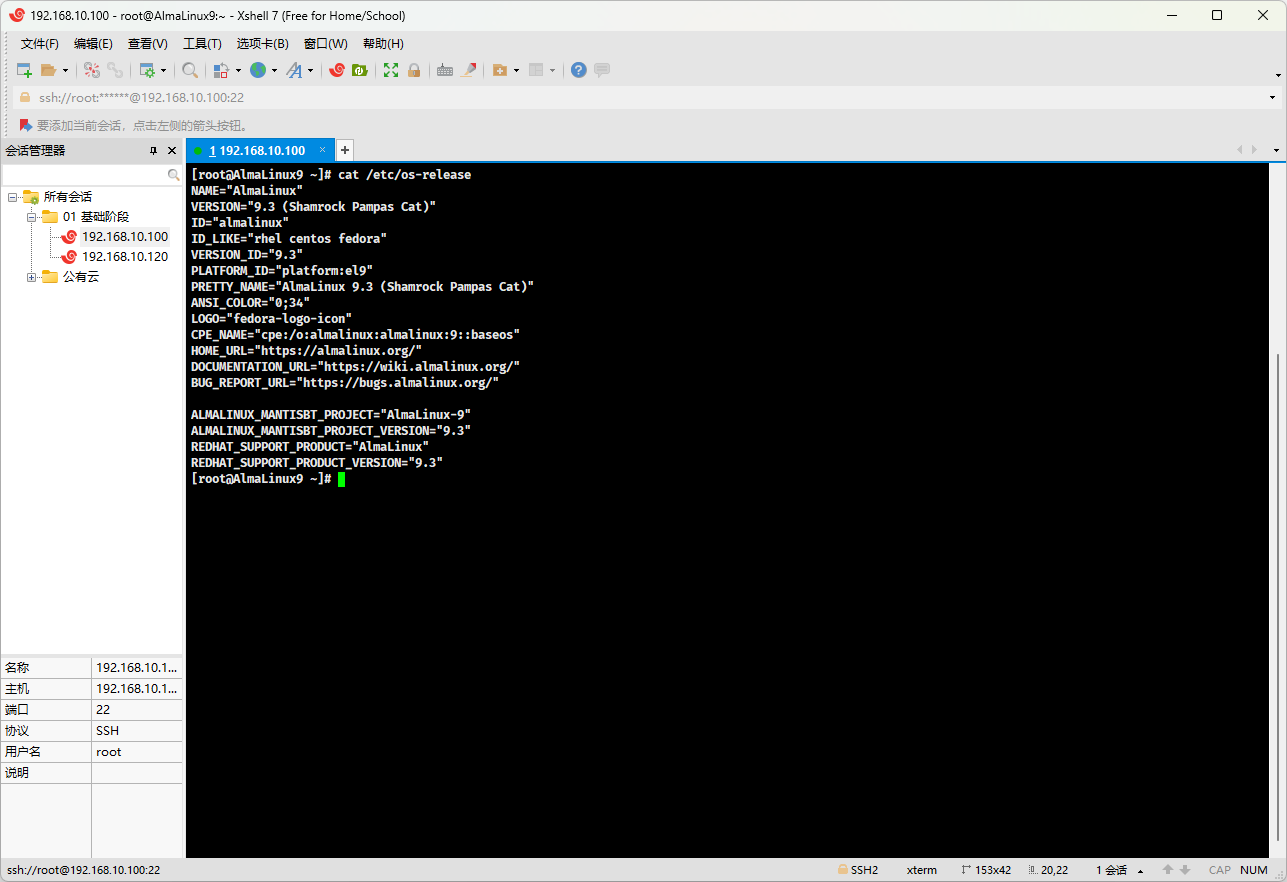
- Check the kernel version:
uname -sr
- Disable SELinux:
# Check if SELinux is enabled
getenforce
# Check if SELinux is enabled
cat /etc/selinux/config
# Permanently disable SELinux, requires reboot
sed -i 's/enforcing/disabled/' /etc/selinux/config
# Disable SELinux for the current session, invalid after reboot
setenforce 0
# Check if SELinux is enabled
cat /etc/selinux/config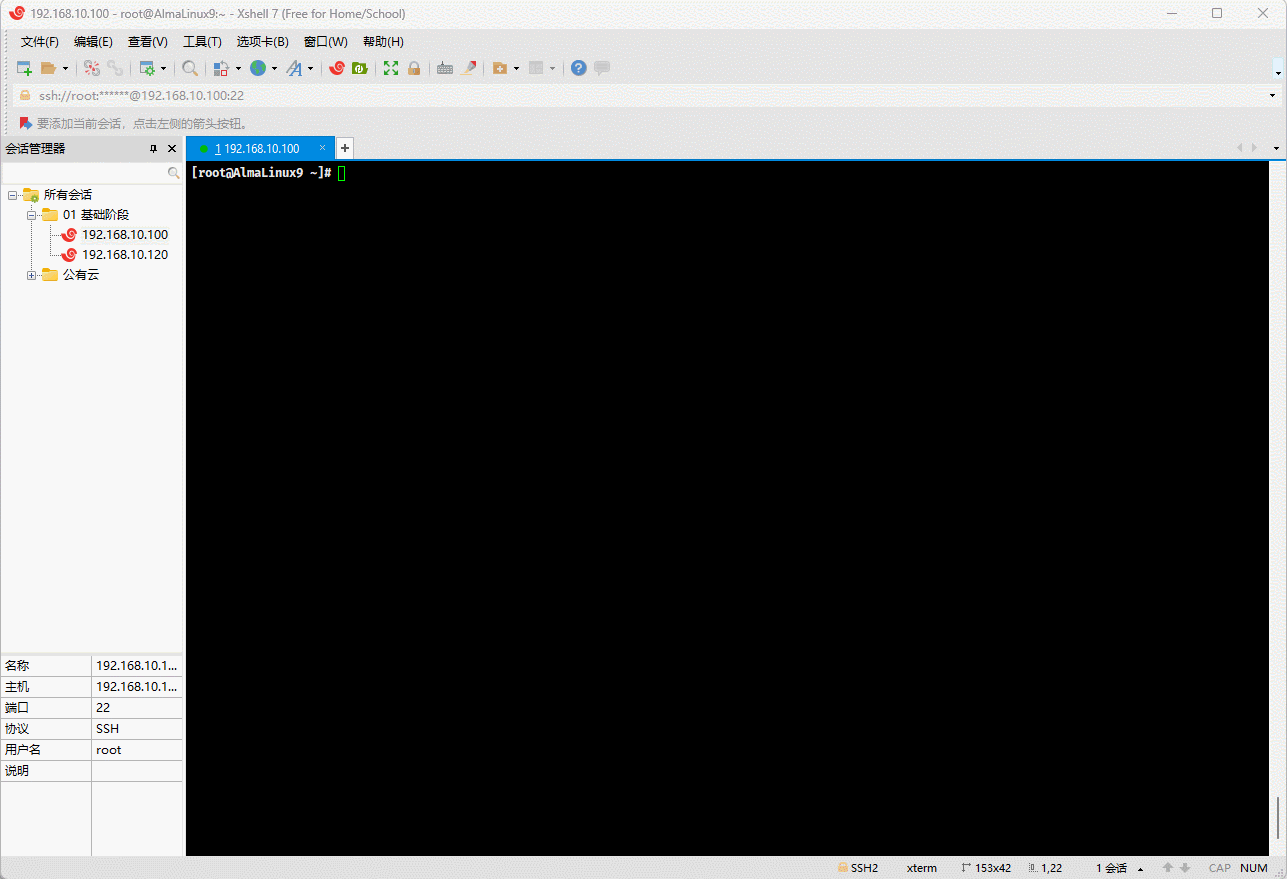
- Disable swap partition:
# Check if swap partition exists
free -h
# Disable swap for the current session, invalid after reboot
swapoff -a
# Permanently disable swap, requires reboot
sed -ri 's/.*swap.*/#&/' /etc/fstab
# Check if swap partition exists
free -h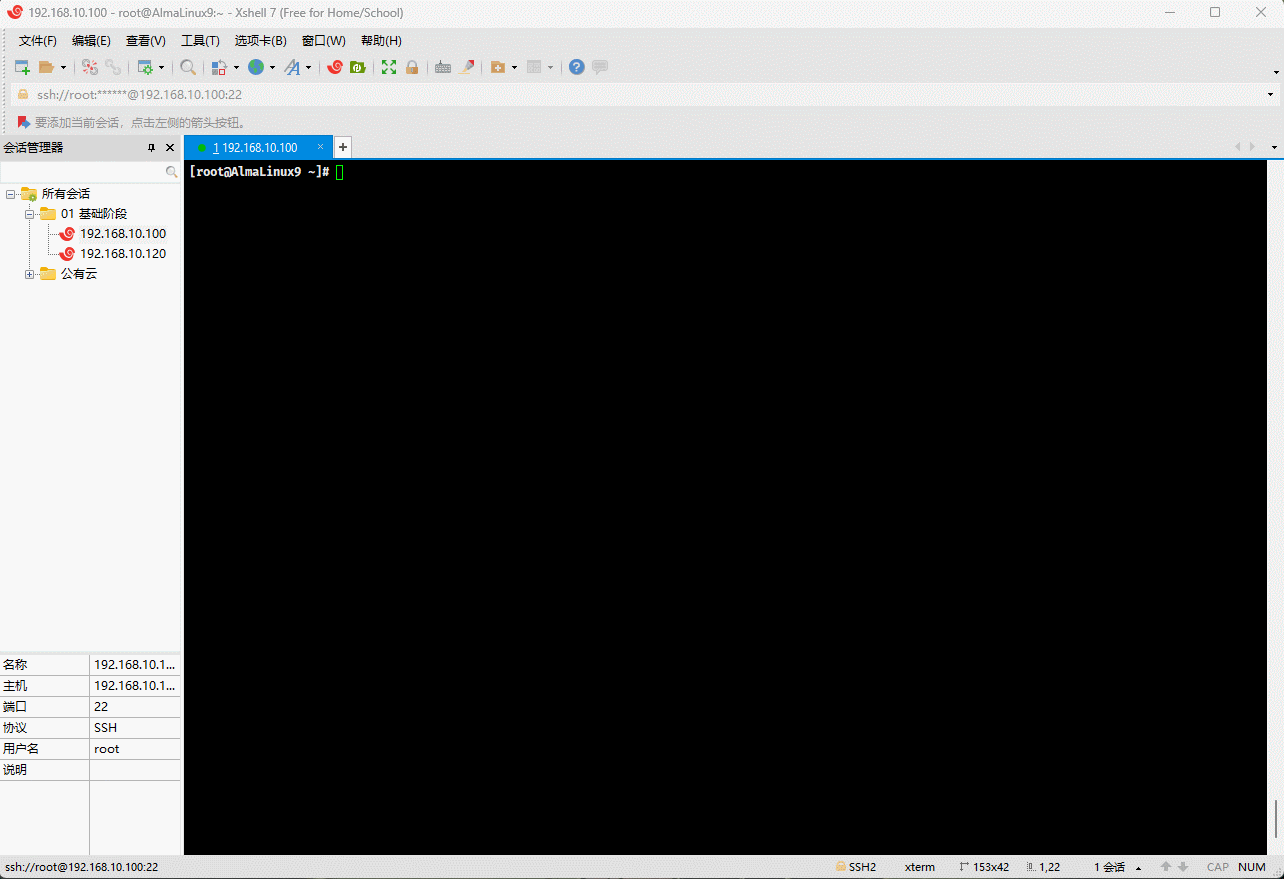
- Disable firewall:
systemctl disable --now firewalld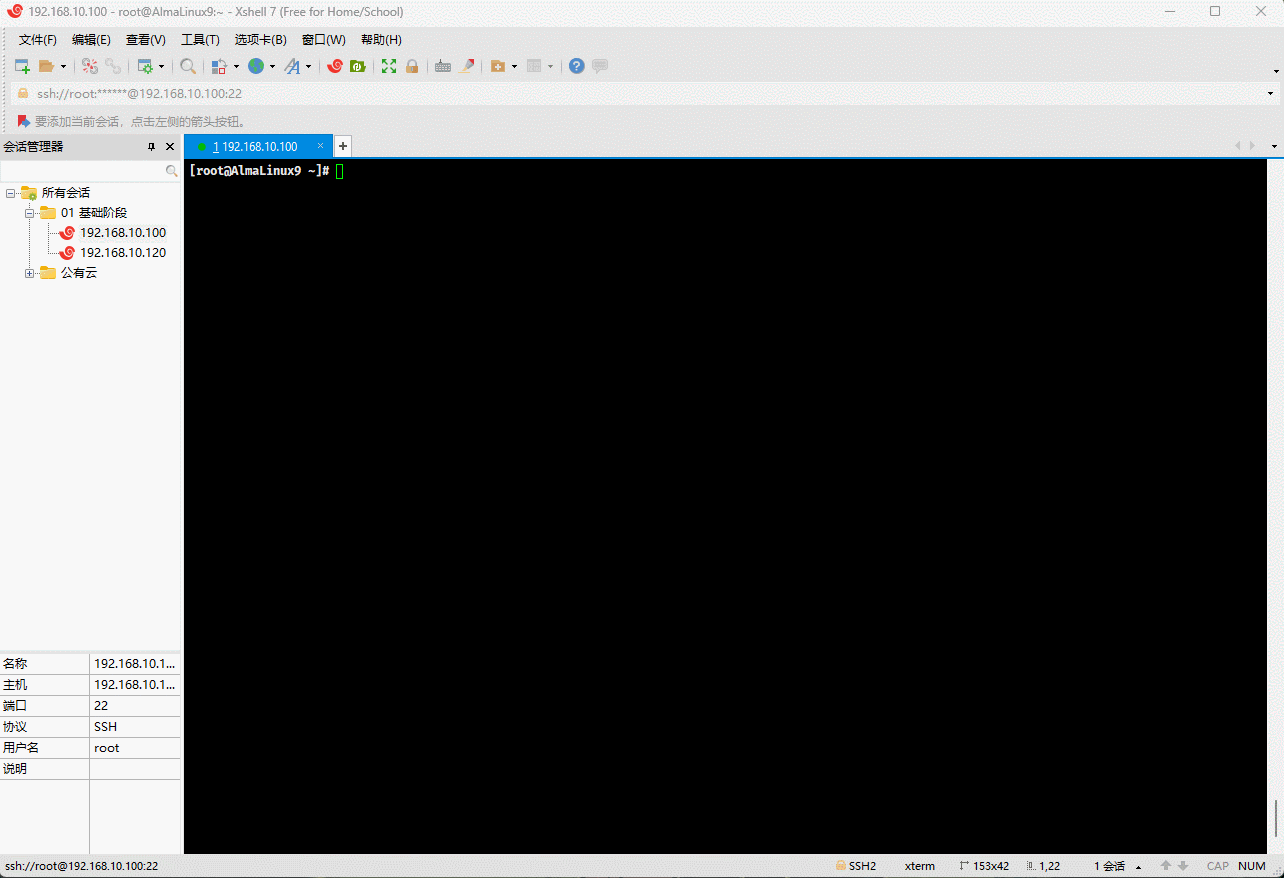
1.2 Docker Installation
- Add Docker repository:
警告
In some countries, such as China, there may be issues like Docker domain pollution, making the official Docker repository address unavailable. In such cases, please use dnf config-manager --add-repo https://mirrors.aliyun.com/docker-ce/linux/centos/docker-ce.repo.
sudo dnf config-manager \
--add-repo https://download.docker.com/linux/centos/docker-ce.repo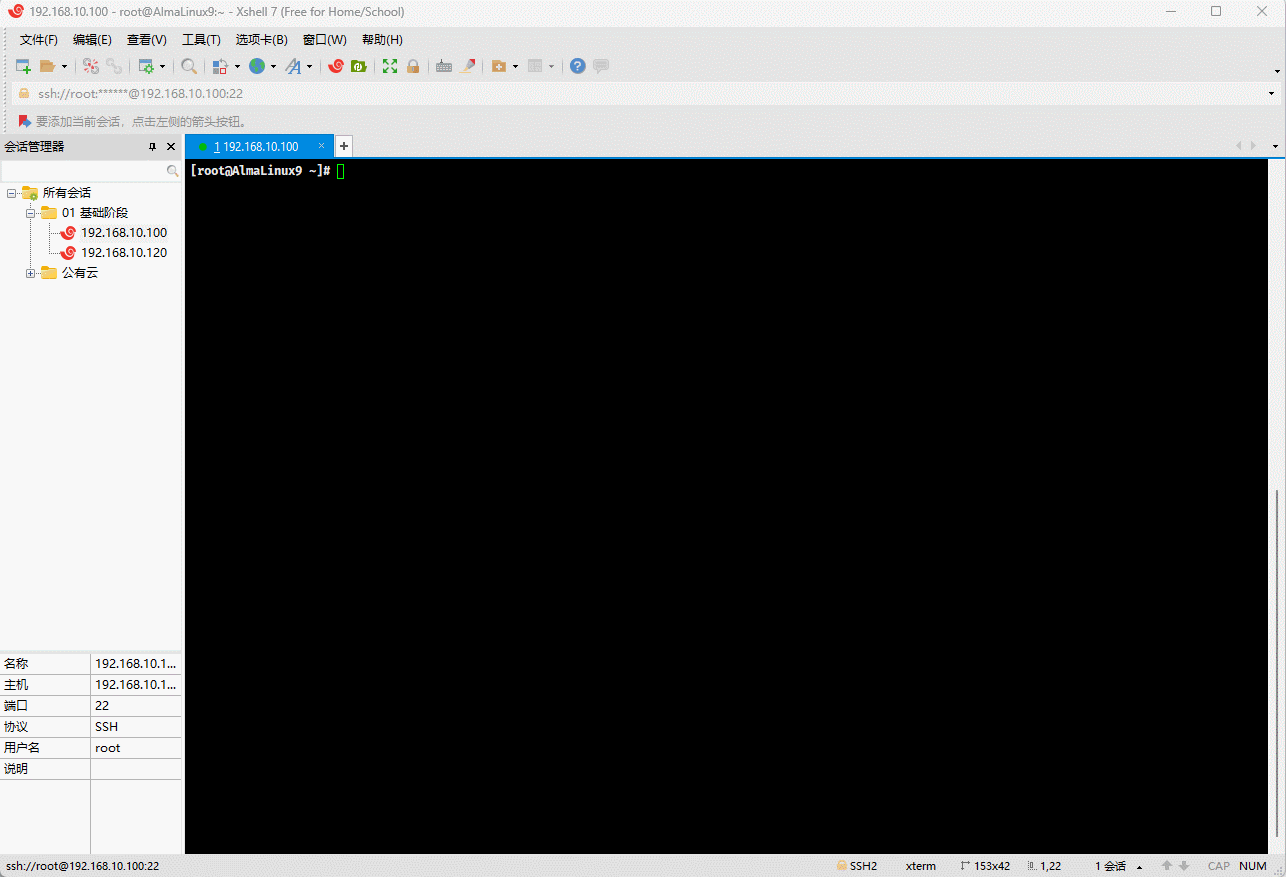
- Install Docker:
sudo dnf -y install docker-ce docker-ce-cli containerd.io docker-compose-plugin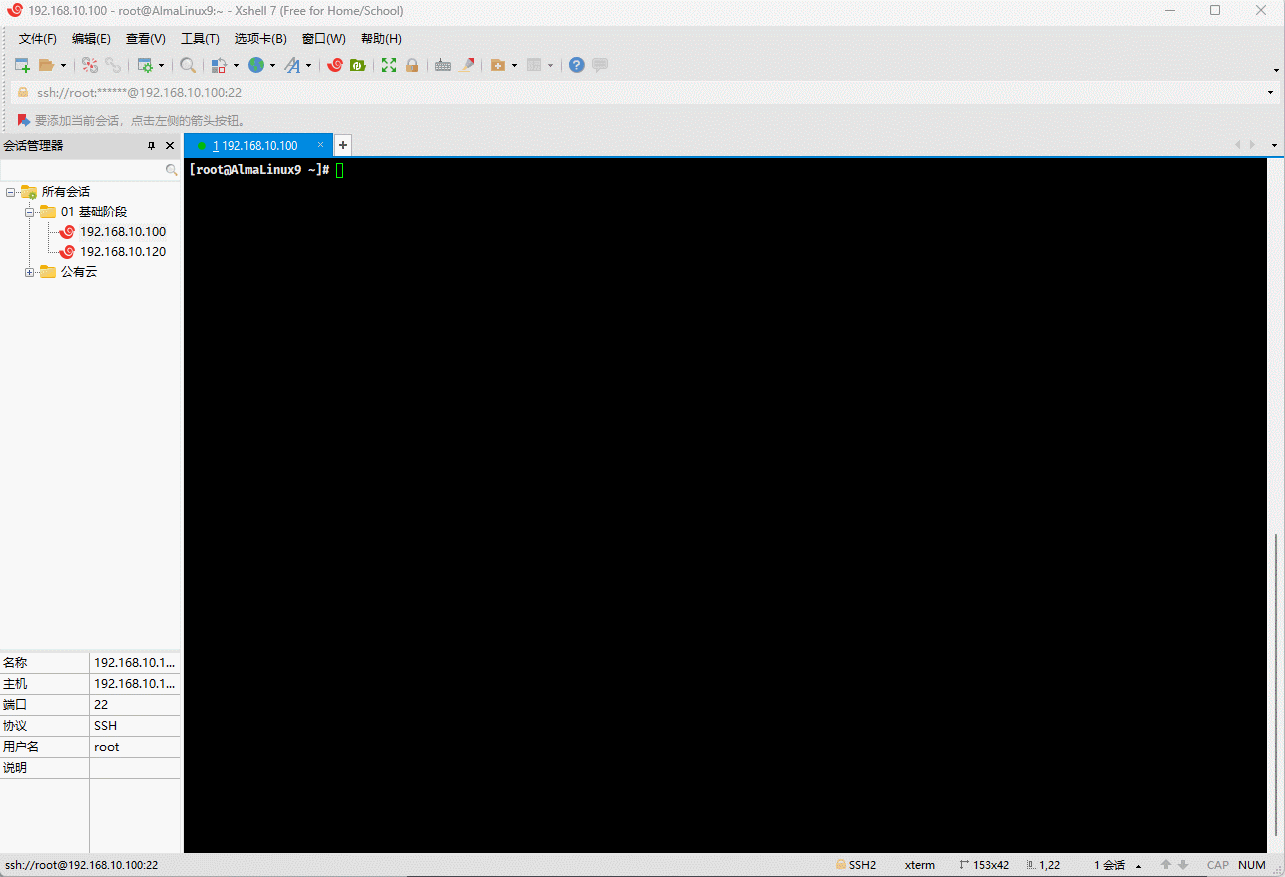
- Start Docker:
sudo systemctl --now enable docker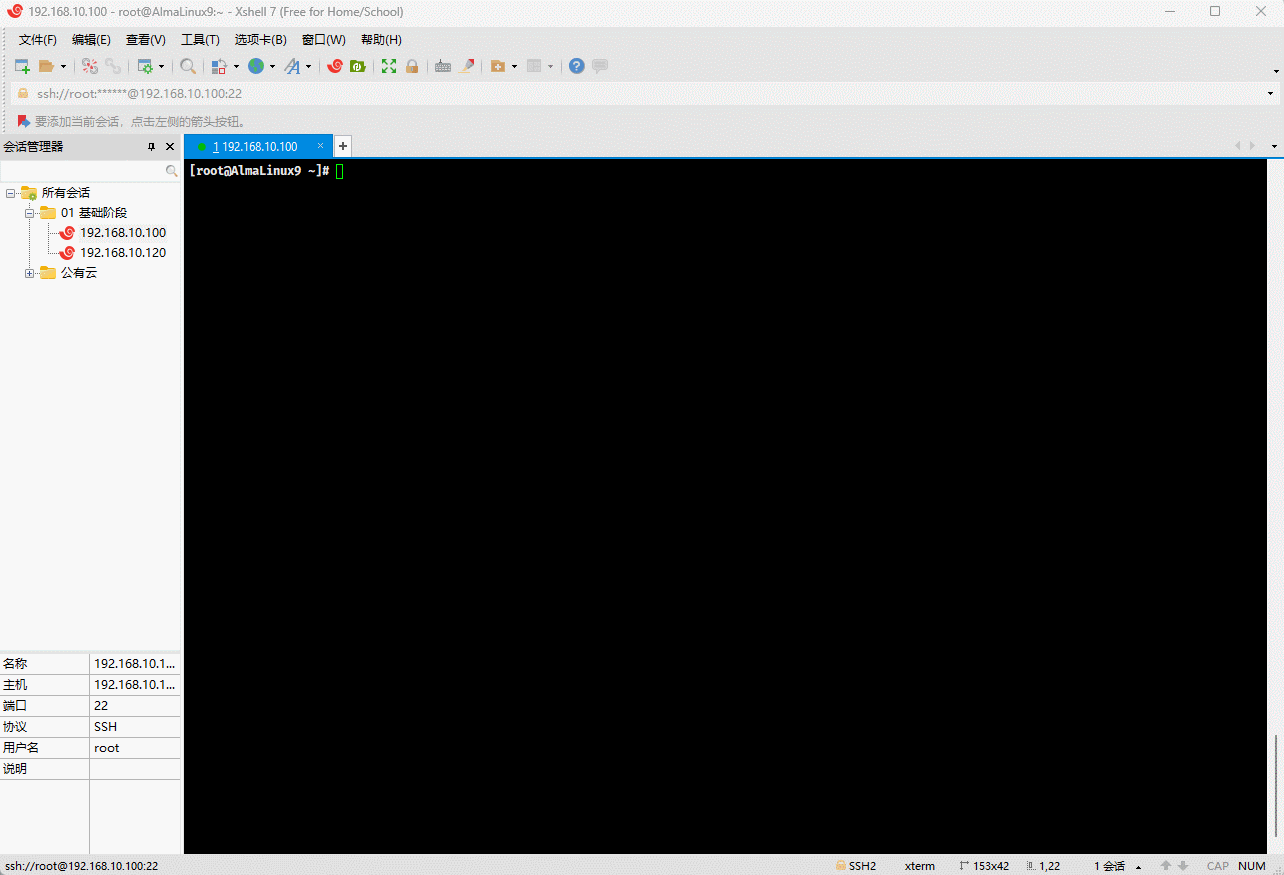
- Check if Docker is installed successfully:
docker version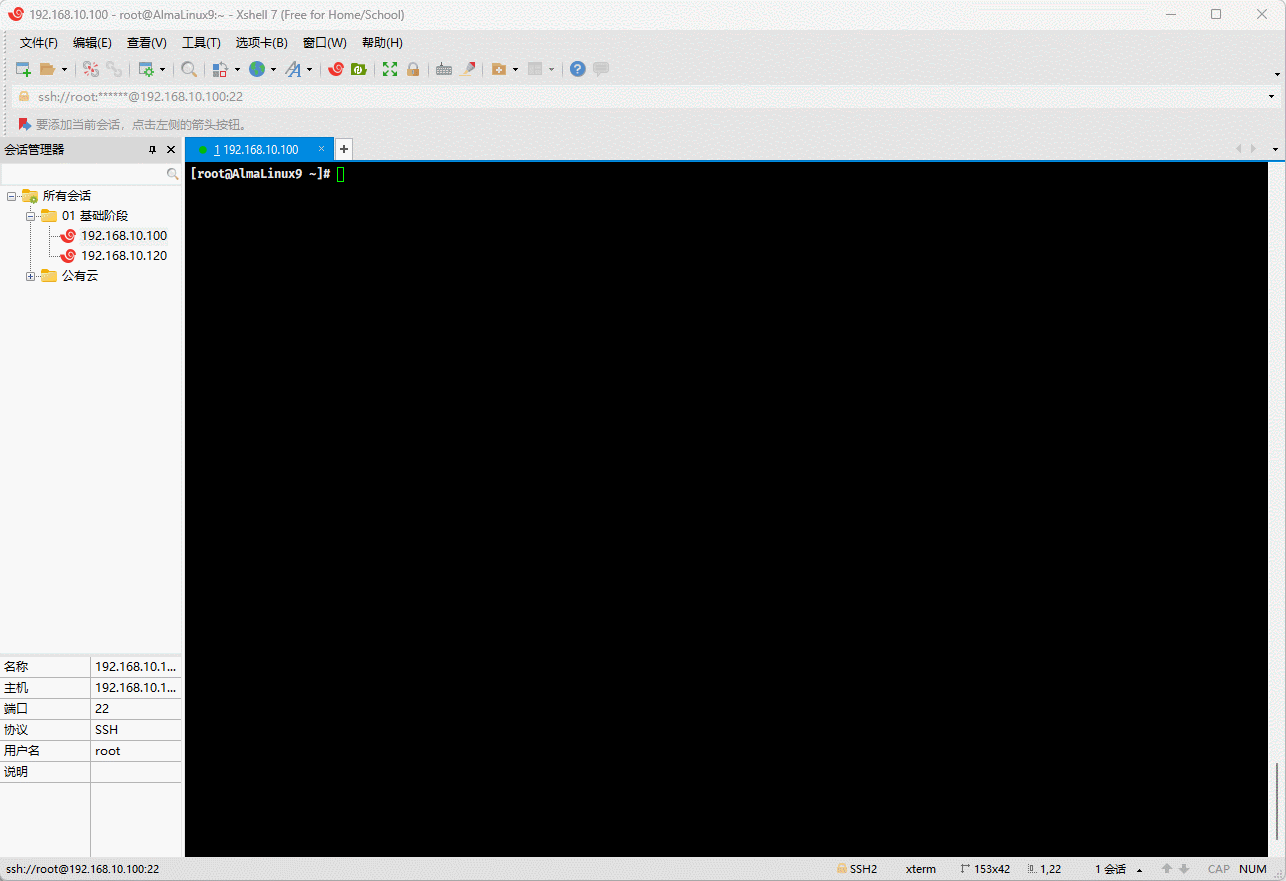
- Docker image acceleration:
警告
In some countries, such as China, there may be issues like Docker image source addresses being offline or unavailable, making the previously configured Docker image source address unusable. In such cases, please check the corresponding image source address here and replace it.
sudo mkdir -pv /etc/dockertee /etc/docker/daemon.json <<-'EOF'
{
"exec-opts": ["native.cgroupdriver=systemd"],
"registry-mirrors": [
"https://du3ia00u.mirror.aliyuncs.com",
"https://docker.m.daocloud.io",
"https://hub-mirror.c.163.com",
"https://mirror.baidubce.com",
"https://docker.nju.edu.cn",
"https://docker.mirrors.sjtug.sjtu.edu.cn"
],
"live-restore": true,
"log-driver":"json-file",
"log-opts": {"max-size":"500m", "max-file":"3"},
"max-concurrent-downloads": 10,
"max-concurrent-uploads": 5,
"storage-driver": "overlay2"
}
EOF提醒
If the Docker image source address in the shaded area above becomes invalid, please check here and replace it.
sudo systemctl daemon-reloadsudo systemctl restart docker
1.3 Docker Run
- Docker run command:
docker run -d --name nacos \
-p 8848:8848 \
-p 9848:9848 \
-p 10848:10848 \
-v /var/nacos/io:/io:rw \
qingpan/rnacos:stable警告
stable is the latest official version number, but you can also specify a particular image version, such as: qingpan/rnacos:v0.4.0.
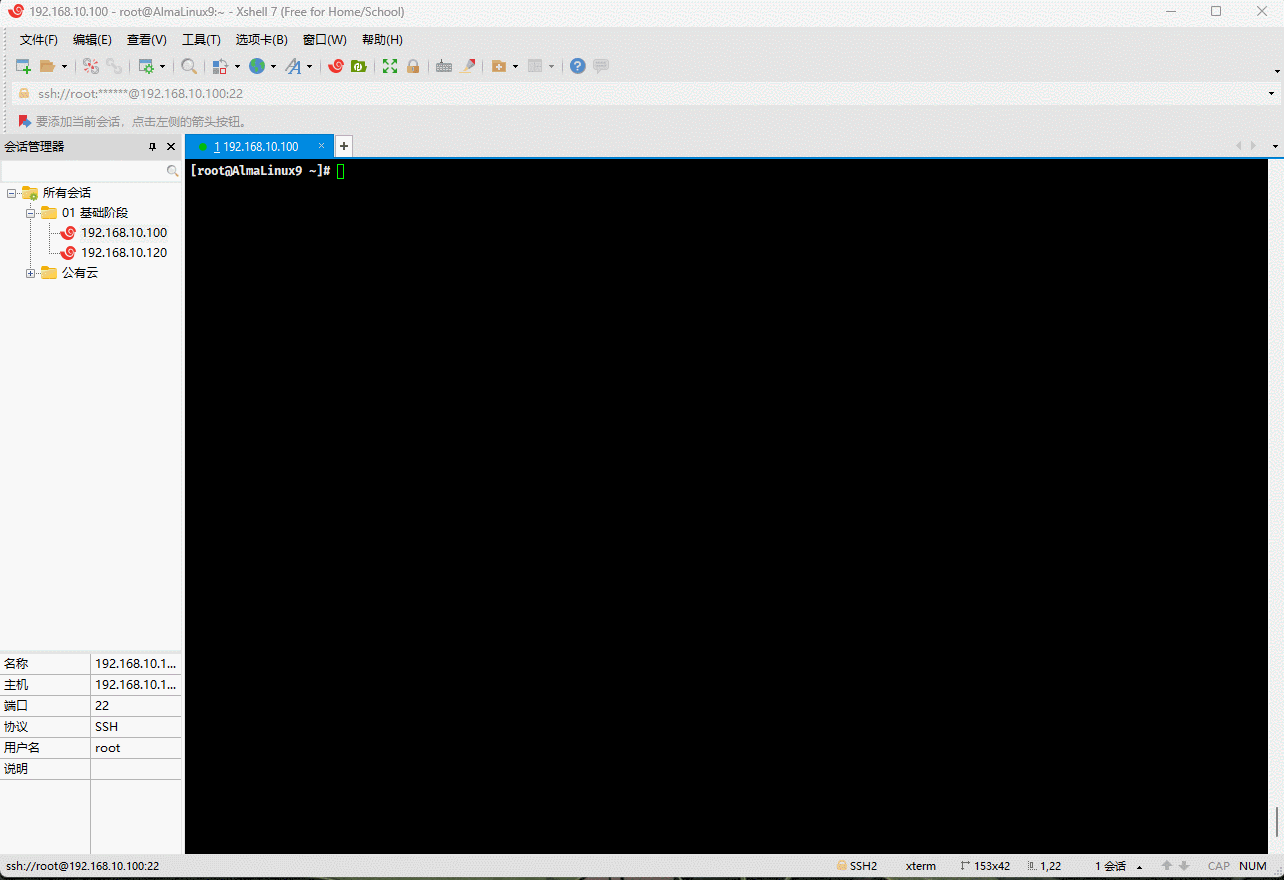
- Docker image version details:
| Docker Image Version | Tag Format | Example | Notes |
|---|---|---|---|
| gnu debian package | $version | qingpan/rnacos:v0.4.0 | Built on debian-slim, larger in size (compressed 36M, unpacked 102M), offers relatively higher performance. |
| musl alpine package | $version-alpine | qingpan/rnacos:v0.4.0-alpine | Built on alpine, smaller in size (compressed 11M, unpacked 34M), offers relatively lower performance. |
警告
If you're not concerned about the version, you can use the latest official version as shown below:
- ① Latest gnu official version:
qingpan/rnacos:stable. - ② Latest alpine official version:
qingpan/rnacos:stable-alpine. - ③ Currently, the
stableimage fails to run on MacOS arm systems. You can switch to thestable-alpineimage for now, and this note will be removed once the armstableimage issue is resolved.
1.4 Docker Compose Run
- Create the docker-compose.yaml file:
vim docker-compose.yamlversion: '3.8'
services:
nacos:
image: qingpan/rnacos:stable
container_name: nacos
ports:
- "8848:8848"
- "9848:9848"
- "10848:10848"
volumes:
- /var/nacos/io:/io:rw
restart: always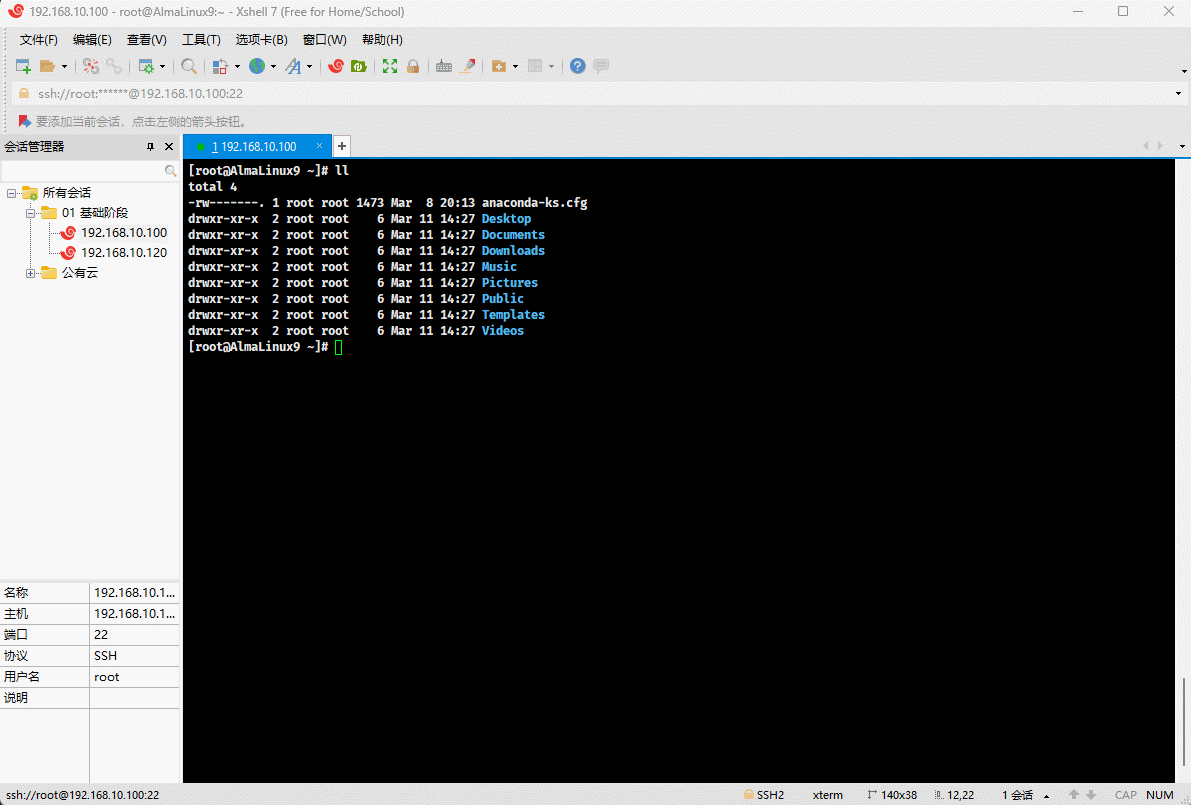
- Run:
docker compose up -d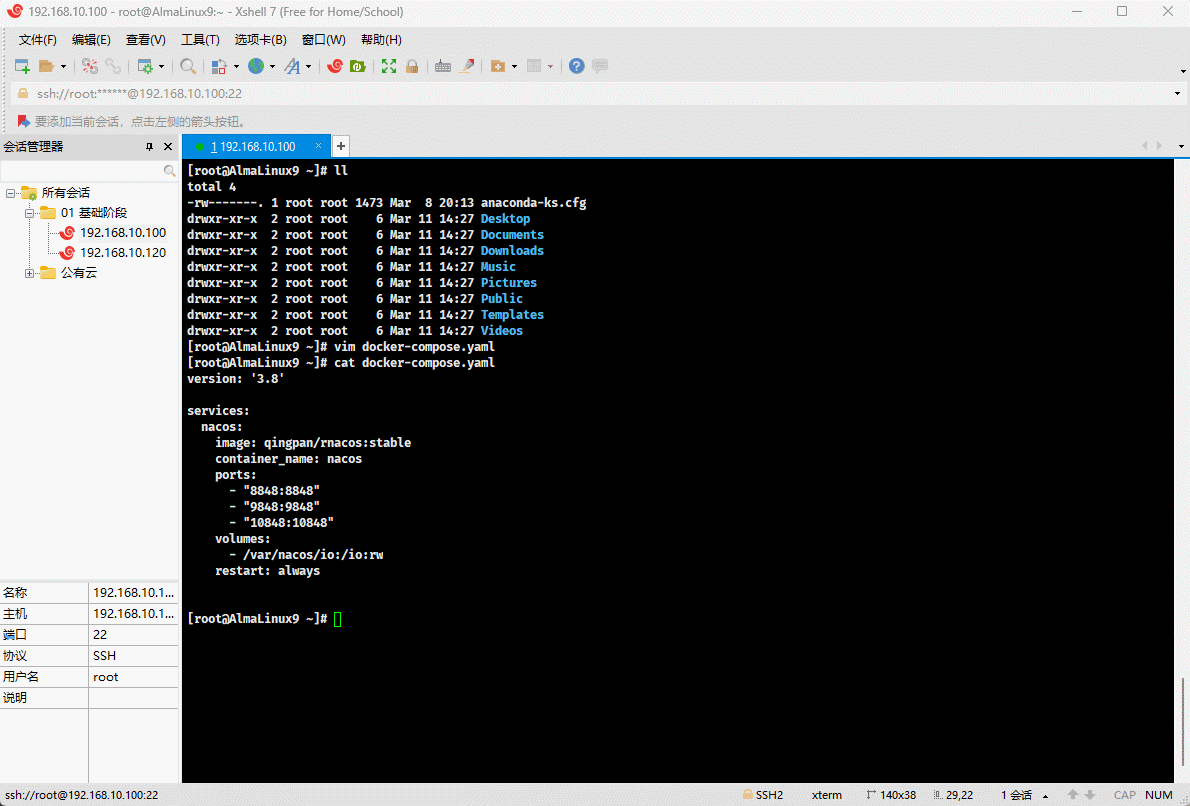
- Verify if it's running successfully:
docker ps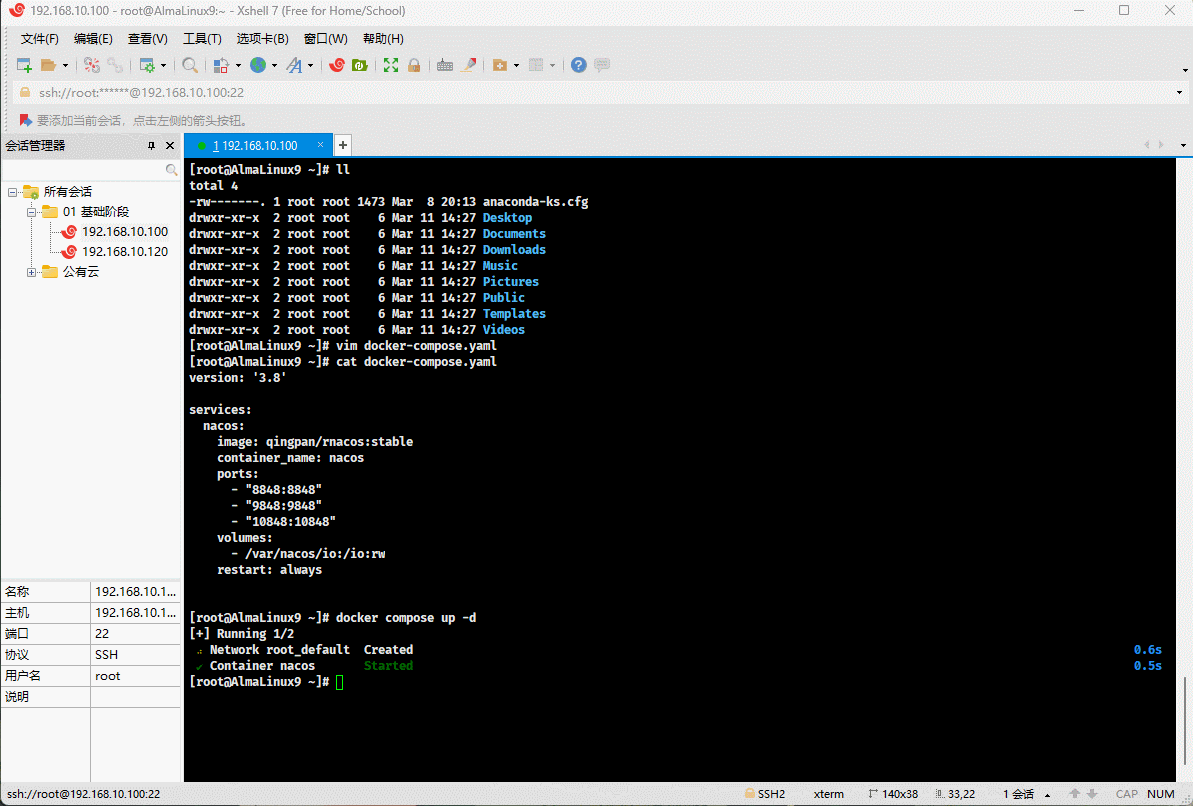
1.5 Using the r-nacos Console
1.5.1 Access
- Once the service is up and running, you can access the old console by navigating to
http://192.168.10.100:8848in your browser:
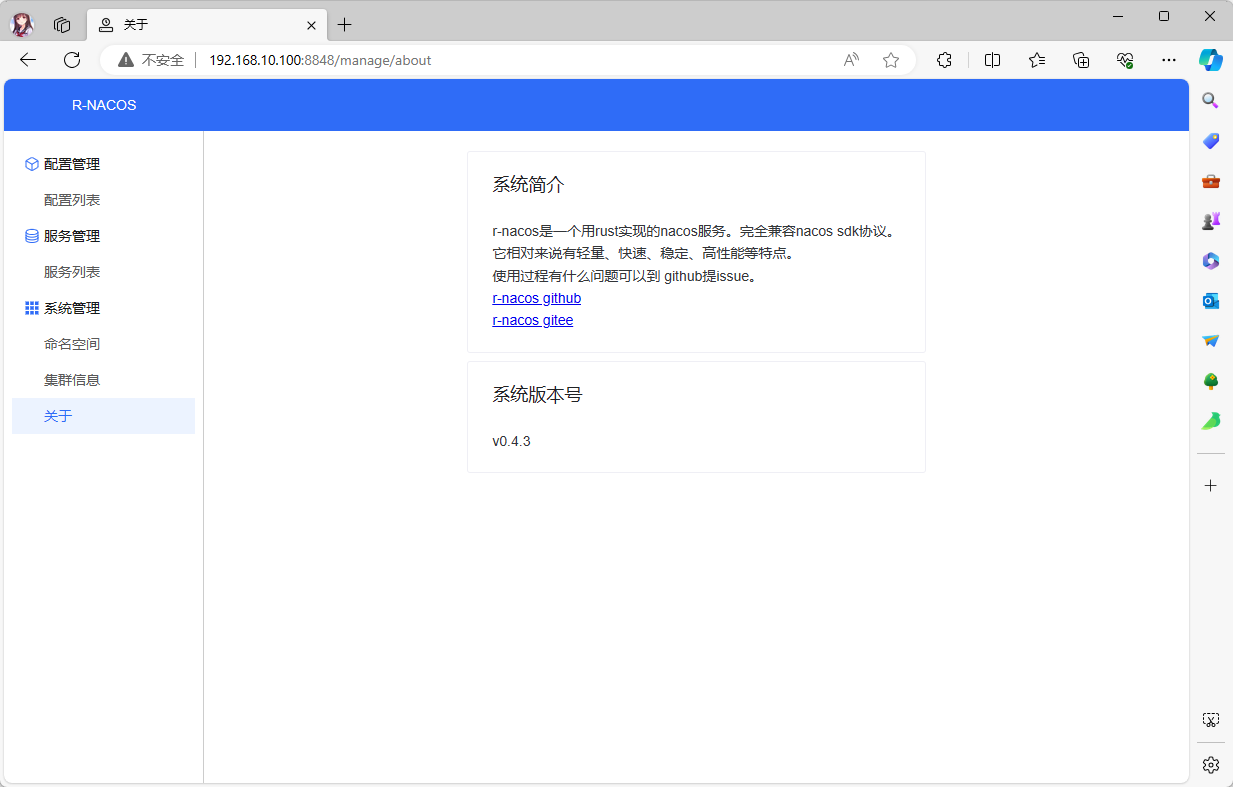
警告
The 8848 port is associated with the old console, which doesn't require a login and lacks user management features. It might be phased out in the future!!!
- After the service starts, you can access the new console by visiting
http://192.168.10.100:10848in your browser:
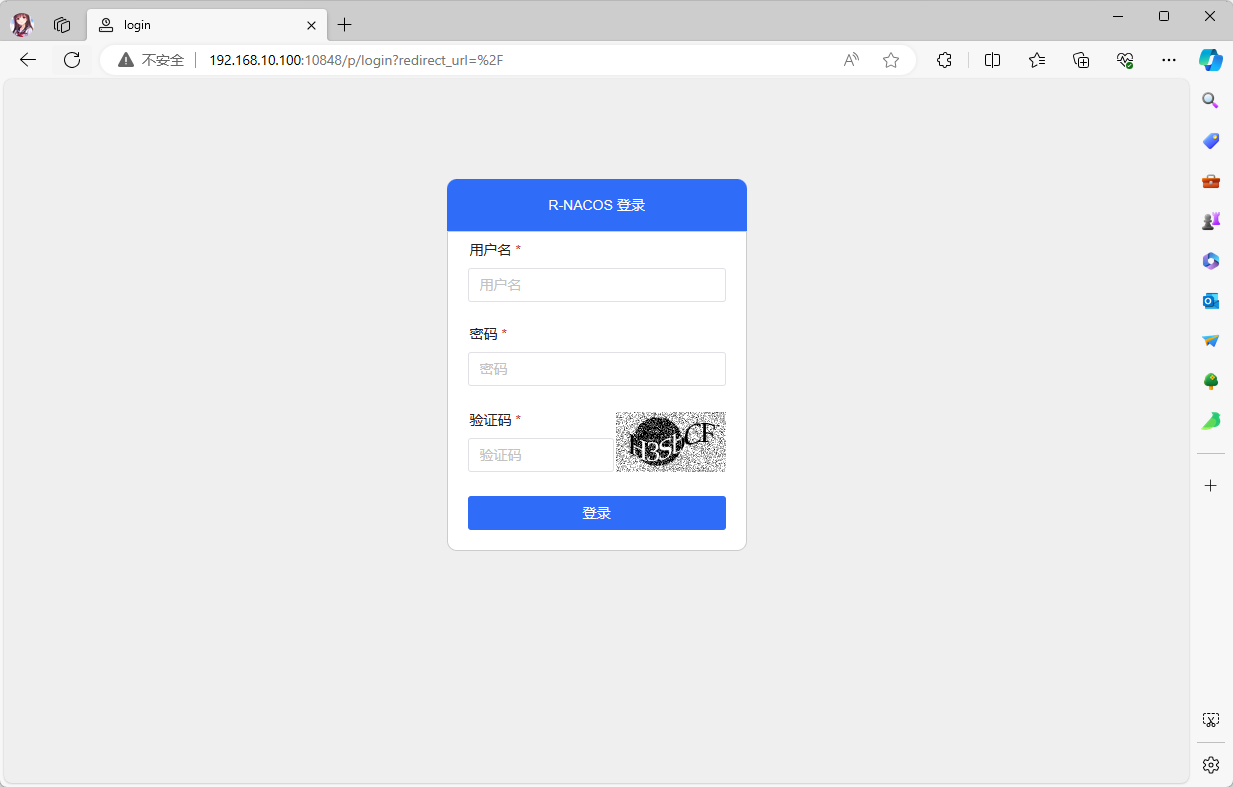
重要
① The default username and password are both
admin.② The
10848port is linked to the new console, which offers comprehensive user management, login verification, and permission controls, and can be exposed to external networks.
- Now, you can log in and explore:

1.5.2 User Management
- Here are the roles available for user management:

重要
Before making the nacos console port accessible externally, it's advisable to create a custom administrator and either delete or disable the default admin user. The default roles are as follows:
- Administrator: Full access to all console features.
- Developer: Access to all console features except user management.
- Guest: Limited to querying data from the configuration and registration centers, with no editing rights.
- Feel free to add a few users to test the functionality:
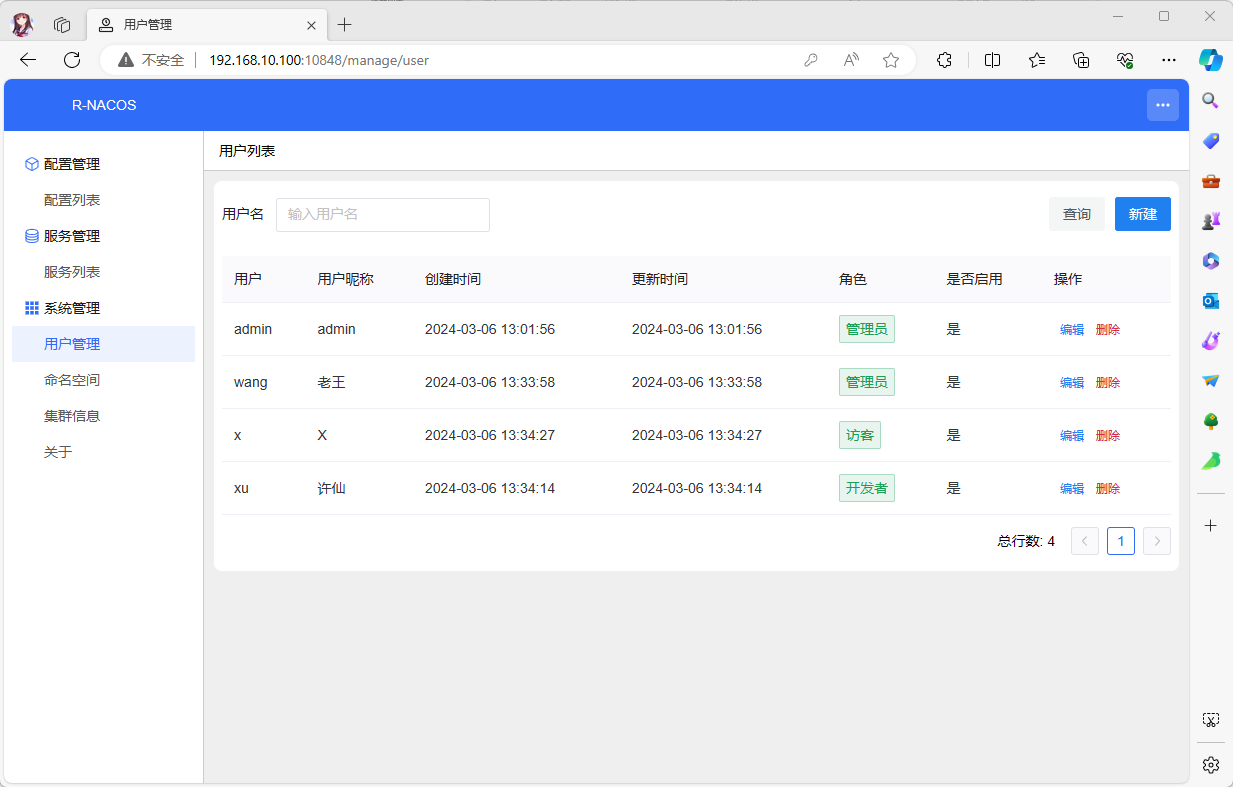
1.5.3 Configuration Management
- Managing the configuration list:
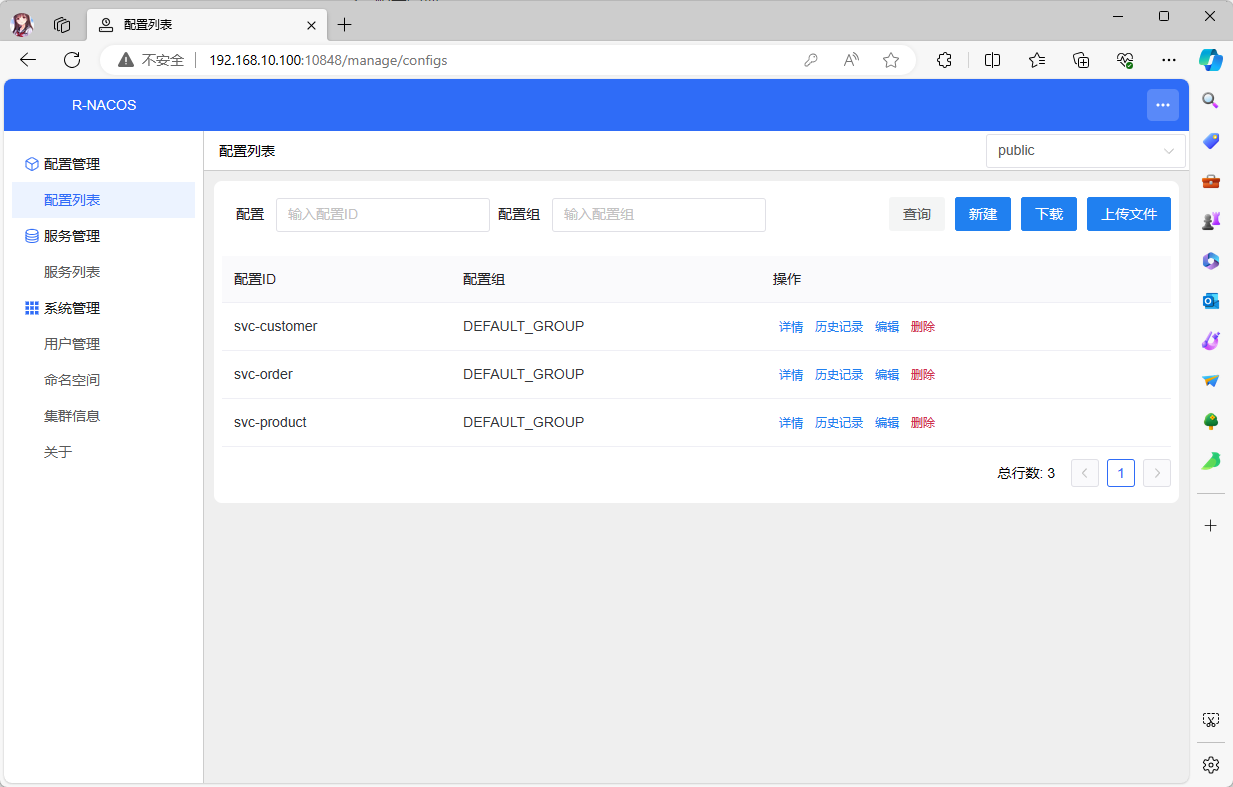
- Editing configurations:
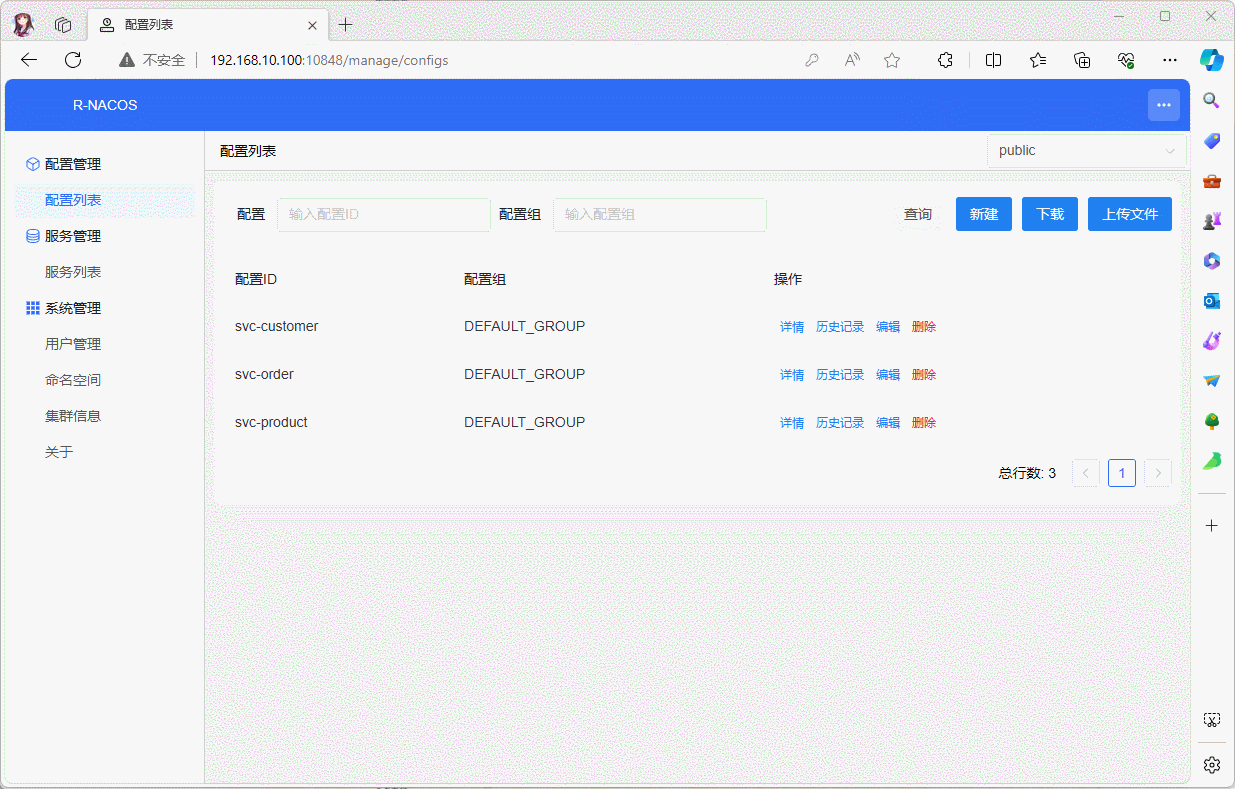
1.5.4 Service Management
- Managing the service list:

- Managing service instances:
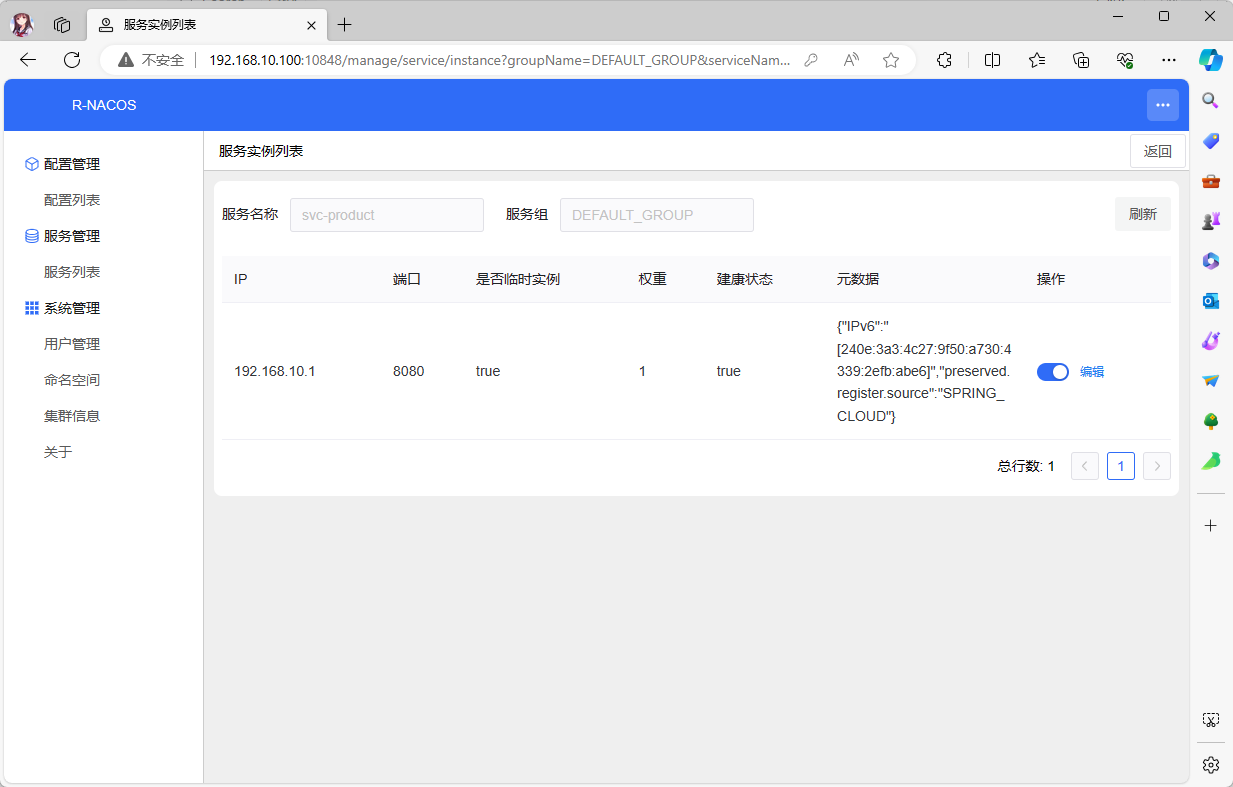
1.5.5 Namespace Management
- Namespace list:
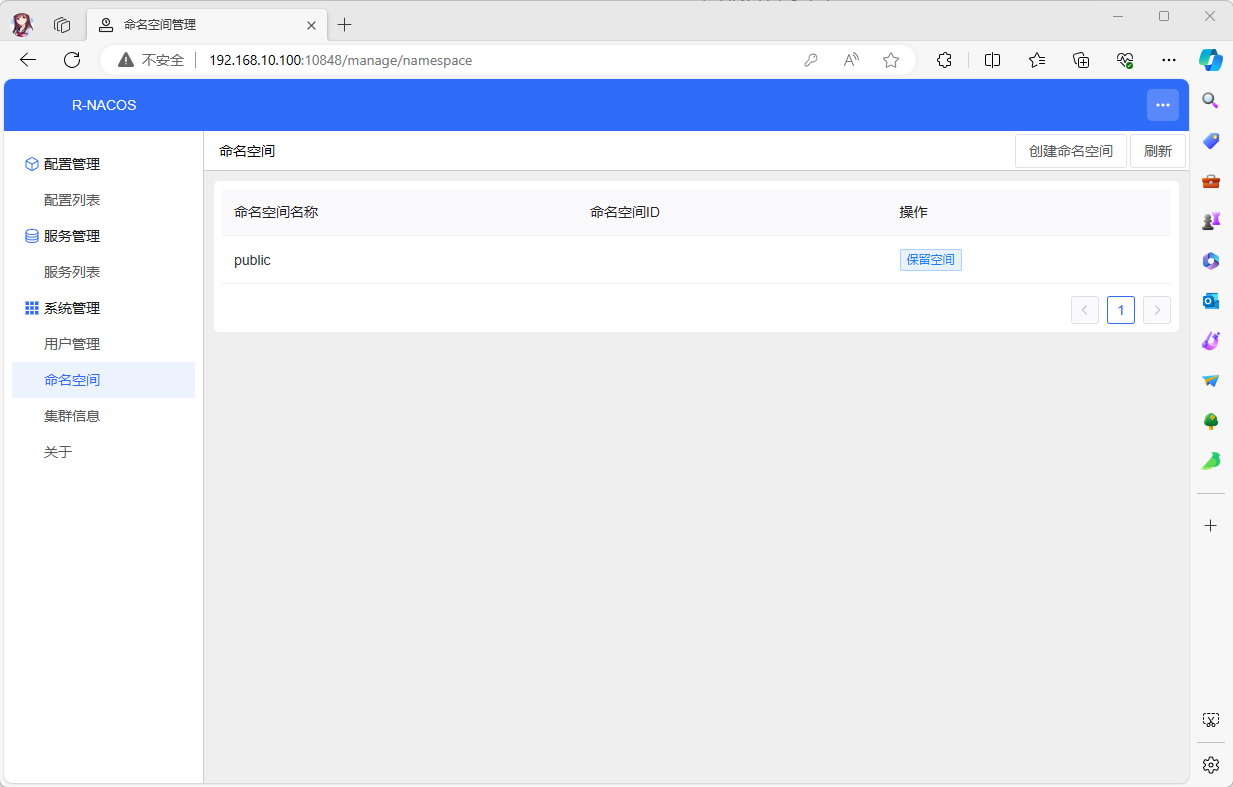
Chapter 2: Software Package Installation
2.1 Linux or Mac Installation and Running
2.1.1 Overview
- (For Linux or Mac users, simply download the appropriate software package from github, decompress it, and you're ready to go).
重要
The R-Nacos repository has recently moved, and the new address is here.
2.1.2 Installation
- Download the package:
wget -P /opt \
https://github.com/r-nacos/r-nacos/releases/download/v0.4.3/rnacos-x86_64-unknown-linux-musl.tar.gz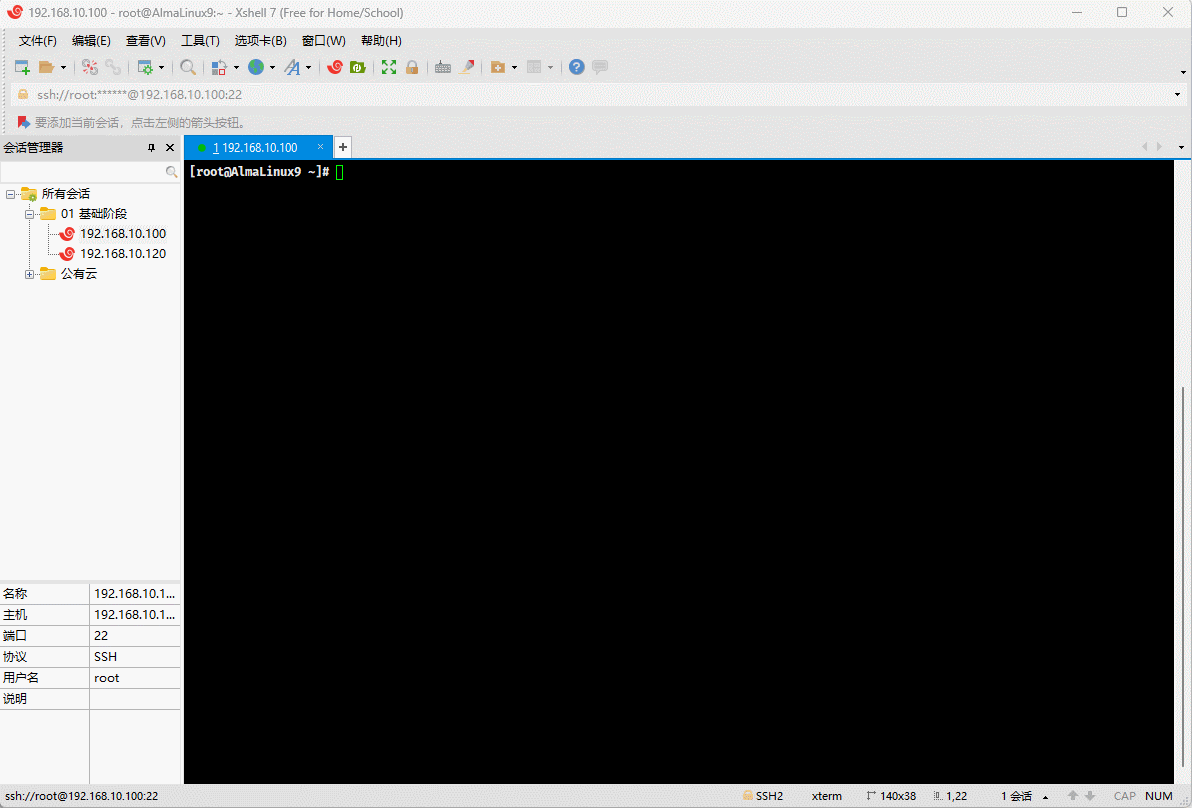
- Decompress the package:
cd /opttar -xvf rnacos-x86_64-unknown-linux-musl.tar.gz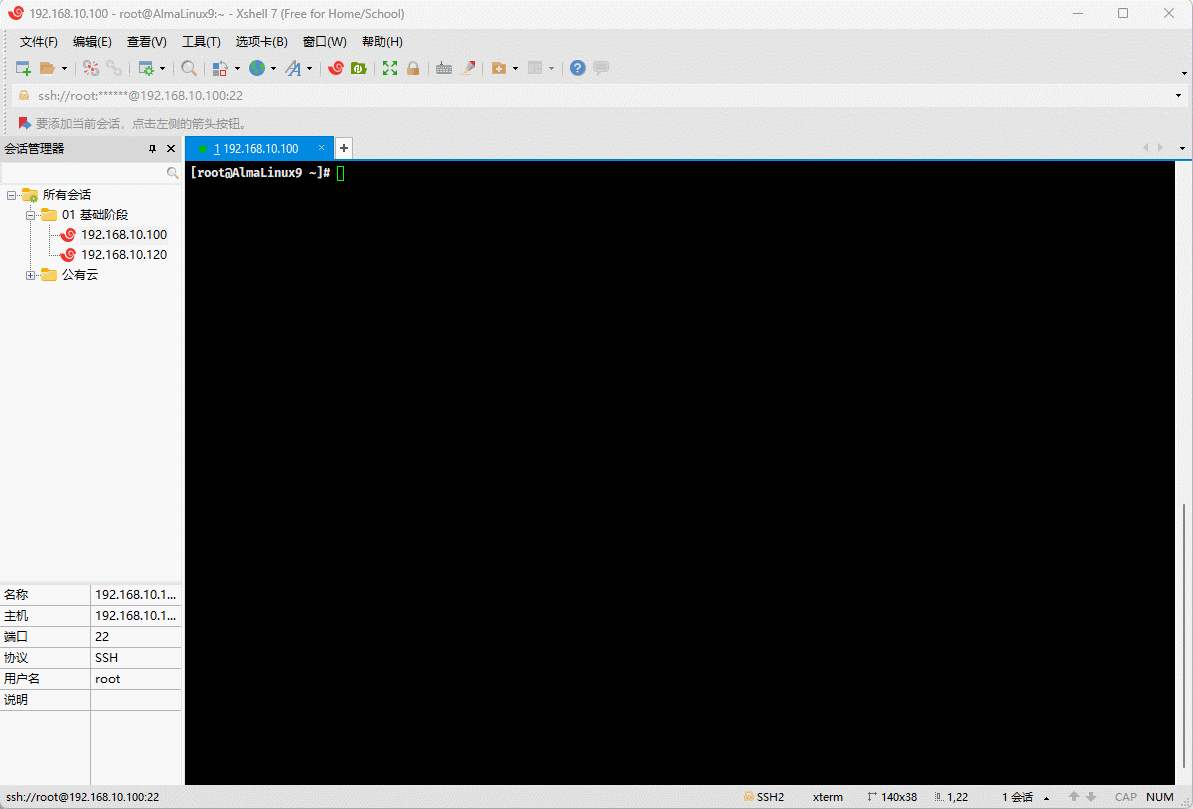
2.1.3 Foreground Running
- Run the following command:
./rnacos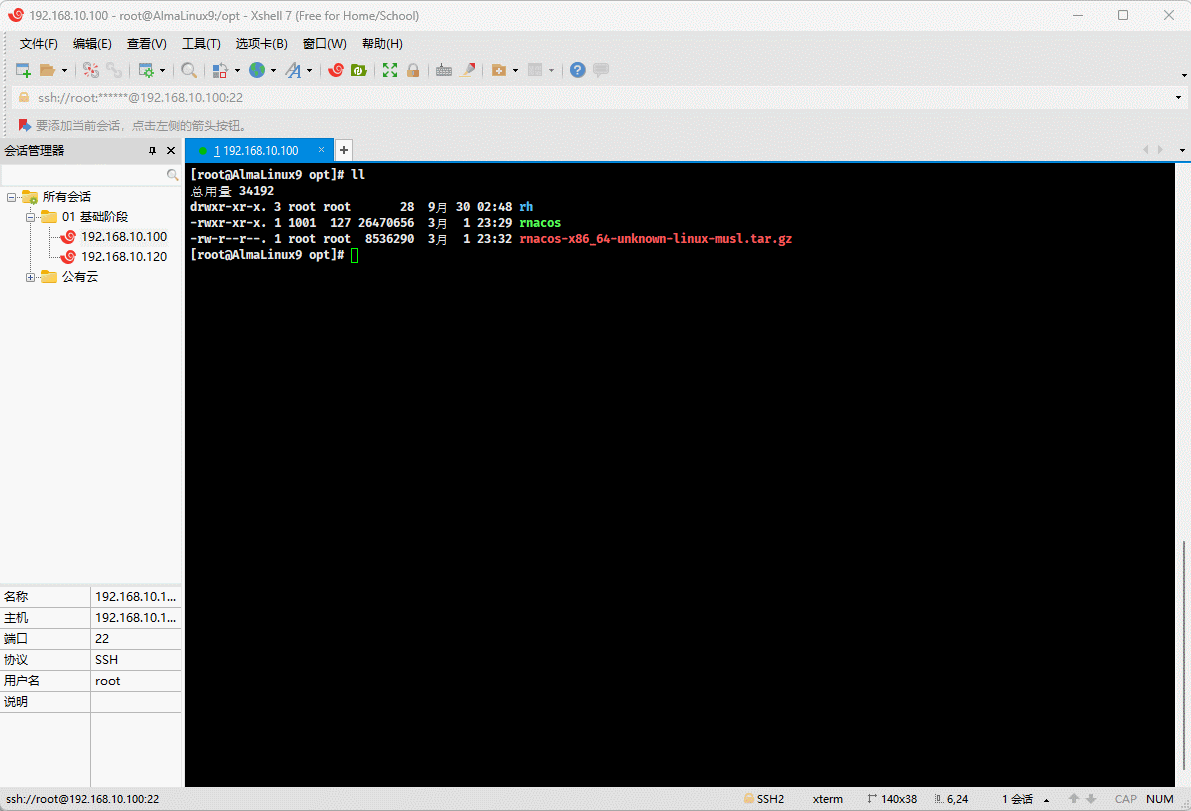
2.1.4 Background Running
- To run in the background:
nohup ./rnacos > rnacos.log 2>&1 &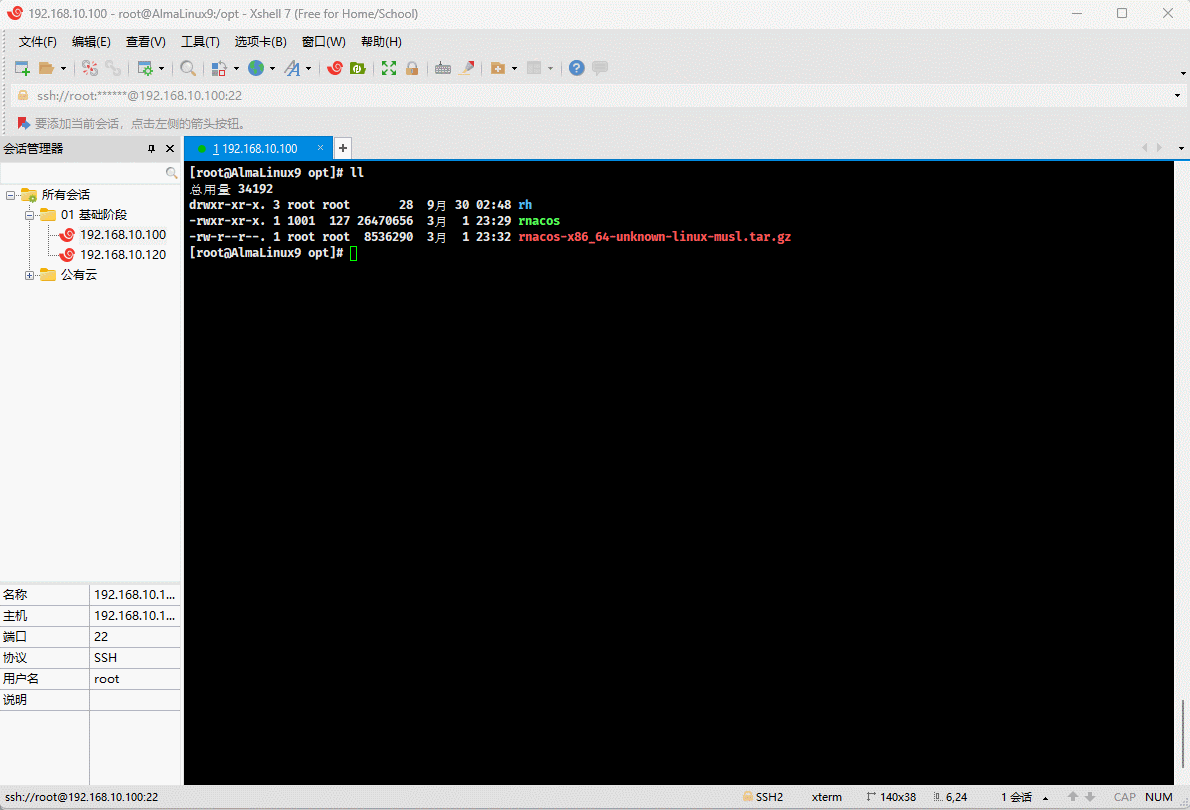
- To check the specified process:
# 8848 or 10848
netstat -anp | grep 8848
2.2 Win Installation and Running
- Simply decompress and run rnacos.exe: omitted.